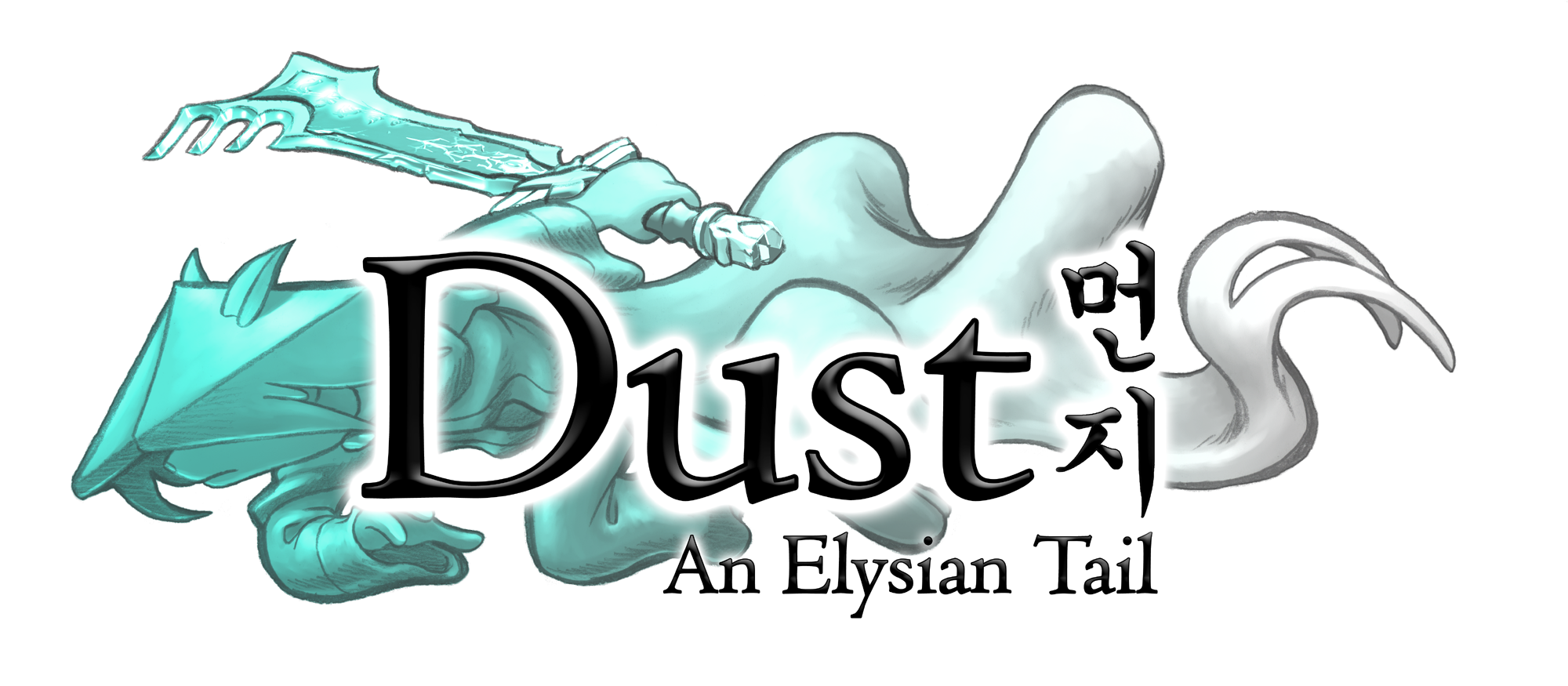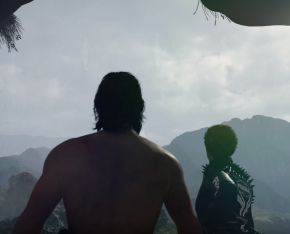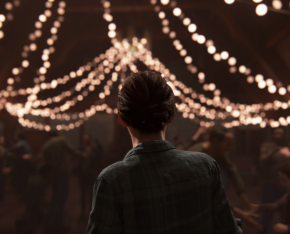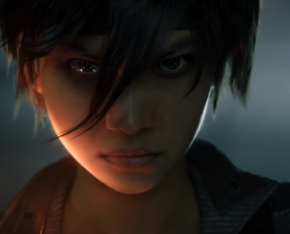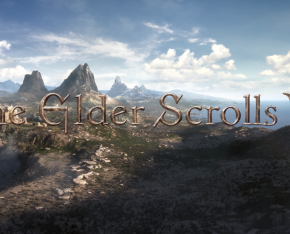By Chance Croft on October 17, 2014 at 4:00pm
WARNING: There will be spoilers, but it will be confined to one chunk of text in the "story" section. You may skip over it if you like!
Story
“Dust: An Elysian Tail” didn’t simply take a bite out of a story that was too big to chew. No, they had that piece in their mouth from the very beginning of the game. The scene begins with a character waking up in a forest with no memory of who “he” (the quotes exist because everyone in this game is an animal) is or why he is there. A talking sword named Arah enters the scene, calling him “Dust” while vaguely discussing his purpose. He is there to assist Dust, but it is about as cryptic as that. Finally, the third musketeer flies into the picture (literally) and introduces herself as “Fidget.” This flying wombat creature explains that she is the keeper of the sword, and ultimately ends up tagging along for the journey. Dust is then led through a quest by Arah in a journey to learn who he is, as well as his purpose.
SPOILERS AHEAD! Scroll down if you care to avoid them.
Dust eventually learns that he has two souls and is what is known as “Sen-Mithrarin,” which means “He who was born from the dust.” This form he possesses now is a combination of two opposing souls. One of them is known as Jin, which was a young boy with a pure heart whose parents were murdered by an assassin for assisting an opposing race known as “Moonbloods.” The other soul he possesses is that of the assassin himself, Cassius. The problem here is that none of the two are ever explored. There is only one dialogue moment that allows you to seemingly alter your path, down one soul or another, based on what you say. However it ends up being that the same response is given regardless of what is picked. General Gauis, the antagonist of the story as well as Cassius’s general and close friend, has also been committing a genocide of the Moonbloods, and tries to save the soul of Cassius right up until the end. This is all bothersome, because it is clear from the General’s point of view that Cassius had some positive qualities, as well as a backstory worth exploring, but never happens. Instead Jin is the good, Cassius is the evil, and the world is far too black and white.
Depth of Characters
One of the things that really bothered me is that the story never tried to make a real connection with anyone outside of the main characters. The three that traveled around together were explored (although still not extensively), but they never dug deep enough to make the player care about any character outside the main three. Not even the other few that do show up more than once.
Gameplay
Combat
The combat was decent, although I don’t have extensive 2D action game experience. The game, once again, was almost where it needed to be, but was missing a few things that kept it from getting stale. First of all, there were only a very small number of sword combos, and (here’s the kicker) you never got to learn more! They were all presented in the basic combat introduction. Arah felt stale and bland much more quickly than he should have considering the importance of combat in a game like this.
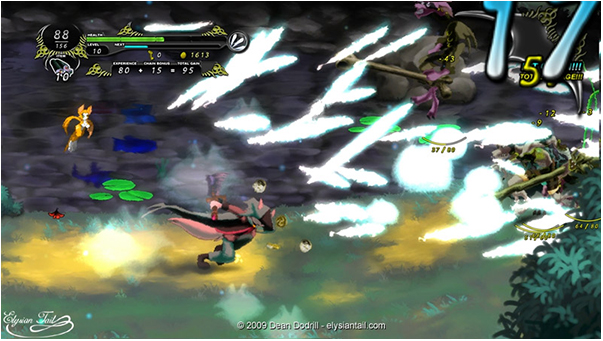
Fidget can assist by shooting projectiles, of which you do unlock more (only three in total). While these projectiles are active the player can make a tornado, which will fling the projectiles around with a lot of force, hurting lots of baddies. The tornado can be used while in the air, which will actually keep Dust airborne for quite some time. I would destroy entire waves without even having to touch the ground. Not incredibly difficult, but it definitely very satisfying! Eventually the tornado flight becomes sort of a second nature, and you engage in fights with a rhythm to it.
Controls and Equipment
One thing I will definitely praise this game on is the responsiveness of its controls. Sliding, jumping, rolling, and even just hitting things felt very quick to respond. This is nice, because whenever I would eventually die, I could do nothing more than blame myself for bad play. That being said, the control responsiveness made me die very few times.
Another unique aspect is this game’s blueprint system. Rather than finding gear, a player will just find materials. They can then combine those materials into a variety of things (based on which blueprints they have available) and have it teleported to them from the blacksmith! It was an interesting way to approach a gear system, but it worked in this case. My only gripe about it is that it was difficult to discern what materials were needed, as well as where to get them. Eventually the player becomes more familiar, but it took a little bit of playing to get the hang of it.
Art Style/Graphics
Cutscenes
The cutscenes are when the art is at its worst in my opinion. They have a very specific look, and it reminds me of an older anime. You can see eyes through hair; everything seems kind of “sketched”; etc. The style they chose definitely worked with the game, and gave it some personality. But ultimately they look like they’re drawn by a teenager in art school, and that student isn’t a prodigy either. Take a look at the cutscenes in the video below if you so choose, but BE WARNED! IT CONTAINS SPOILERS!
Dialogue
Whenever characters speak to each other in the game, and it’s not a cutscene, it shows a cut out of the characters talking in front of your gameplay (see picture). Sometimes these dialogue sequences will be trigged by something you do, so it can take place anywhere! They look slightly better than the cutscenes, but the mouths don’t always match up to the dialogue correctly. It’s probably just the 1080p that makes it looks better, but I still never had any real complaints about the moments of dialogue.
Gameplay Graphics
This is definitely the strongest factor that “Dust: An Elysian Tail” has going for it. Every backdrop is gorgeously painted and full of rich, saturated colors. Just take a look at the picture (or Google some on your own) if you don’t believe me. There is also quite an extensive variety of backdrops, which definitely gave a fresh feeling to each area explored, even if the biomes of some of them are similar. “Dust: An Elysian Tail” is a great example of an indie game that manages to look really nice while having a unique approach to the art style.
Final Thoughts
“Dust: An Elysian Tail” is a game that wants to be more than it can. It promises this big epic story, yet doesn’t fully deliver. It hooks you in with very responsive and entertaining combat, yet doesn’t expand on that combat throughout the entirety of the game. It created some new ideas while getting stuck with typical indie game restrictions. Hopefully developers will take the good from this, expand upon it, and it will inspire something amazing. If you are a PlayStation Plus subscriber I would recommend giving this game a try, but otherwise don’t spend too much money on it.
